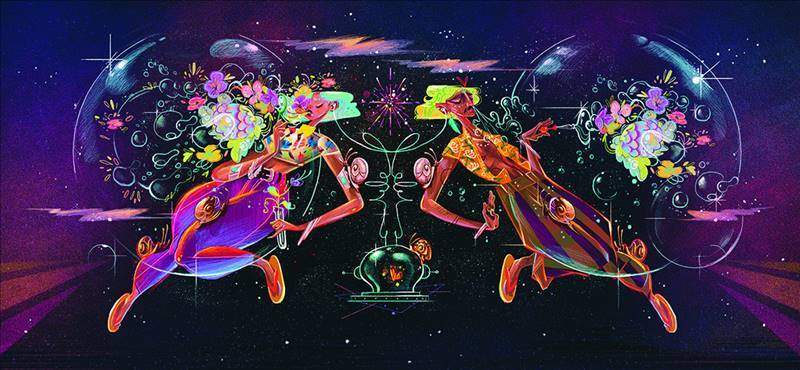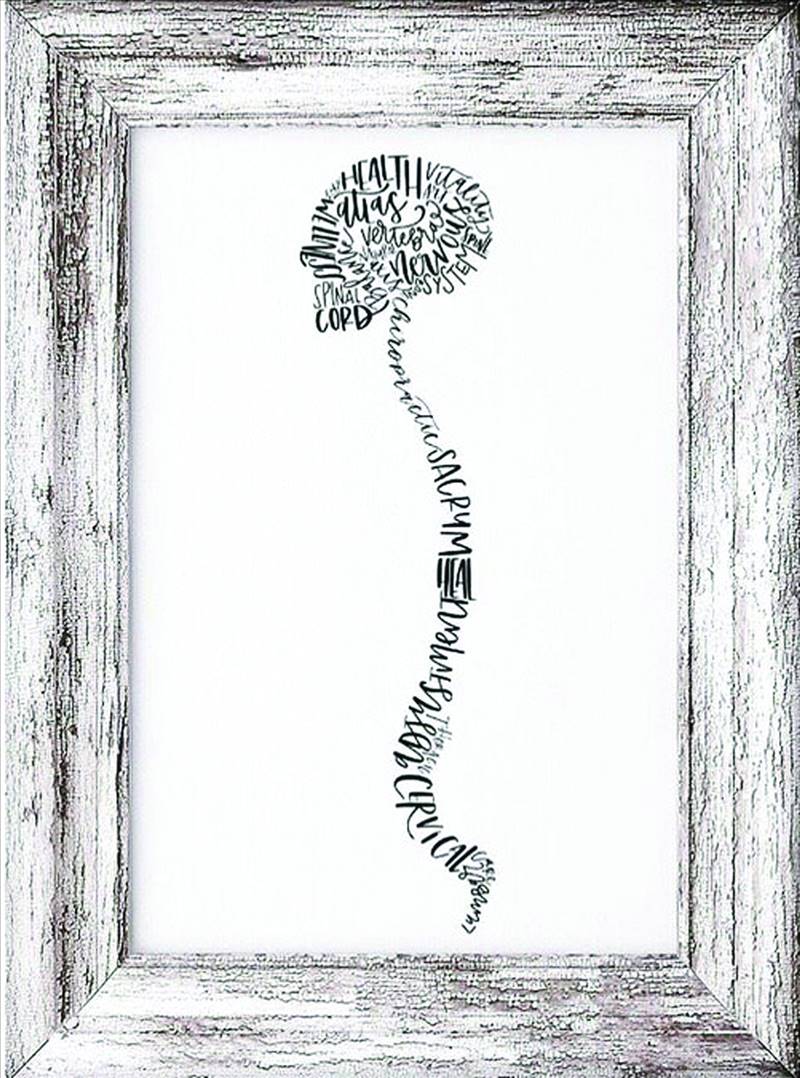
In addition to brain tumour removals and pimple popping, my favorite videos on Youtube are of chiropractor’s “adjusting” people’s bones so loudly that the crack gives me an actual, measurable sense of ease. Broadly speaking the videos that do this are called ASMR, a fairly new term which stands for Autonomous Sensory Meridian Response and covers all those things that send a tingle down our spine. The last decade has seen a boom in the production and consumption of intentionally ASMR videos intended to counter the stress that the modern connected world brings. Think of them like stress balls for millenials.
Of the thousands of ASMR videos out there, most of them are at least a combination of satisfying and horrifying. There is one lady on Youtube who makes millions of dollars a year from eating things while a sensitive microphone picks up every spittle and chew. It’s terrible and beautiful. Like you I, too, thought it was ridiculous – until I absentmindedly visited her channel and spent the next hour and half watching her eat a Big Mac meal before falling into a supremely satisfied sleep.

But chiropractor videos are where it’s at for me, ASMR-ically speaking. There is a term for people like me: crack addicts (bones, not Whitney). I didn’t know too much about chiropractors outside of what I’ve seen on television. From what I know, they’re not very different from desi “haddhi-jors” you find in some many market places throughout Pakistan – men who confidently manipulate your head into near-fatal positions until your whole soul clicks into place. The practice assumes that people’s pain, muscular discomfort and some illnesses are all the result of a misalignment of the spine, which once corrected will cure the patient. As someone who has wrestled with back spasm my whole life (my first memory in kindergarten was being sent home with a cricked neck) I find the idea of manipulating bones into immediate muscular relief a deeply apt practice. To find out more, I made an appointment with a chiropractor.
His name was Dr. Casanova, which should gave been my first hint. Like the offices of most chiropractors, his also looked like the love child of the office of a massage therapist and that of a brain surgeon. Complicated diagrams and anatomical models of the spine jostled for stage time with Zen fountains and Chakra charts. The waiting room was manned by a polite receptionist but placed between two aquariums with trickling water that make you have to pee within seconds of sitting. I was given a form and told to fill out my medical history, which is one of my favourite things to do, based largely on the hope that someone will someday connect childhood obesity to Late-onset Savant Syndrome.
Mr. Casanova (I didn’t see a medical degree) was rotund, warm and friendly. He asked me to lay down on a table with lots of moving parts and led me though a series of exercises designed to test my mobility and alignments. I raised my arms and pointed my toes, twisted my neck, arched my back. After fifteen minutes he told me I have winged scapulas, which were the root cause of my back issues.
“Like an angel?” I asked.
“More like a penguin,” he said in a bored voice.
He put me on my back and started moving my neck left and right when, suddenly and without warning, he pulled my skull quickly and with force. I heard three cracks run down my neck followed by a wave of pain which subsided quickly.
“Yeah,” he said, seeing me wince. “there is a lot of scar tissue there.”
“There is now...” I muttered.
“What?”
“Nothing.”
He worked his way down my spine, cracking my joints intentionally in the way lots of massage therapists have only done by accident over the years. Sometimes it felt like a relief, sometimes painful, sometimes like nothing at all. If I’m honest the adjustments are very different from cracking your knuckles.
The whole thing only took about ten minutes, after which he told me the only way I could help myself was by coming back every week for at least ten weeks. I’m lucky enough to have insurance that helps me cover the cost of the visit (chiropractors are still not considered card carrying members of the medical community, mainly because they never went to medical school, which, you know, fair enough), but for the uninsured these trips can cost hundreds of dollars each time. Understandably, it can seem like a racket.
I left feeling it was nice to have someone who talked about my back with some level of expertise, but I didn’t feel the immediate sense of euphoria I had been led to expect from the videos. Perhaps its not as mechanical as I had hoped.
“That happens,” one doctor said in a video that I saw later that night. Then he put his knee on the patient’s hip and pulled his back until there was “pop” that sent a shiver down my realigned spine, and I knew I;d be seeing Casanova again.
Write to thekantawala@gmail.com
Of the thousands of ASMR videos out there, most of them are at least a combination of satisfying and horrifying. There is one lady on Youtube who makes millions of dollars a year from eating things while a sensitive microphone picks up every spittle and chew. It’s terrible and beautiful. Like you I, too, thought it was ridiculous – until I absentmindedly visited her channel and spent the next hour and half watching her eat a Big Mac meal before falling into a supremely satisfied sleep.

But chiropractor videos are where it’s at for me, ASMR-ically speaking. There is a term for people like me: crack addicts (bones, not Whitney). I didn’t know too much about chiropractors outside of what I’ve seen on television. From what I know, they’re not very different from desi “haddhi-jors” you find in some many market places throughout Pakistan – men who confidently manipulate your head into near-fatal positions until your whole soul clicks into place. The practice assumes that people’s pain, muscular discomfort and some illnesses are all the result of a misalignment of the spine, which once corrected will cure the patient. As someone who has wrestled with back spasm my whole life (my first memory in kindergarten was being sent home with a cricked neck) I find the idea of manipulating bones into immediate muscular relief a deeply apt practice. To find out more, I made an appointment with a chiropractor.
His name was Dr. Casanova, which should gave been my first hint. Like the offices of most chiropractors, his also looked like the love child of the office of a massage therapist and that of a brain surgeon. Complicated diagrams and anatomical models of the spine jostled for stage time with Zen fountains and Chakra charts. The waiting room was manned by a polite receptionist but placed between two aquariums with trickling water that make you have to pee within seconds of sitting. I was given a form and told to fill out my medical history, which is one of my favourite things to do, based largely on the hope that someone will someday connect childhood obesity to Late-onset Savant Syndrome.
Suddenly and without warning, he pulled my skull quickly and with force. I heard three cracks run down my neck followed by a wave of pain which subsided quickly
Mr. Casanova (I didn’t see a medical degree) was rotund, warm and friendly. He asked me to lay down on a table with lots of moving parts and led me though a series of exercises designed to test my mobility and alignments. I raised my arms and pointed my toes, twisted my neck, arched my back. After fifteen minutes he told me I have winged scapulas, which were the root cause of my back issues.
“Like an angel?” I asked.
“More like a penguin,” he said in a bored voice.
He put me on my back and started moving my neck left and right when, suddenly and without warning, he pulled my skull quickly and with force. I heard three cracks run down my neck followed by a wave of pain which subsided quickly.
“Yeah,” he said, seeing me wince. “there is a lot of scar tissue there.”
“There is now...” I muttered.
“What?”
“Nothing.”
He worked his way down my spine, cracking my joints intentionally in the way lots of massage therapists have only done by accident over the years. Sometimes it felt like a relief, sometimes painful, sometimes like nothing at all. If I’m honest the adjustments are very different from cracking your knuckles.
The whole thing only took about ten minutes, after which he told me the only way I could help myself was by coming back every week for at least ten weeks. I’m lucky enough to have insurance that helps me cover the cost of the visit (chiropractors are still not considered card carrying members of the medical community, mainly because they never went to medical school, which, you know, fair enough), but for the uninsured these trips can cost hundreds of dollars each time. Understandably, it can seem like a racket.
I left feeling it was nice to have someone who talked about my back with some level of expertise, but I didn’t feel the immediate sense of euphoria I had been led to expect from the videos. Perhaps its not as mechanical as I had hoped.
“That happens,” one doctor said in a video that I saw later that night. Then he put his knee on the patient’s hip and pulled his back until there was “pop” that sent a shiver down my realigned spine, and I knew I;d be seeing Casanova again.
Write to thekantawala@gmail.com

